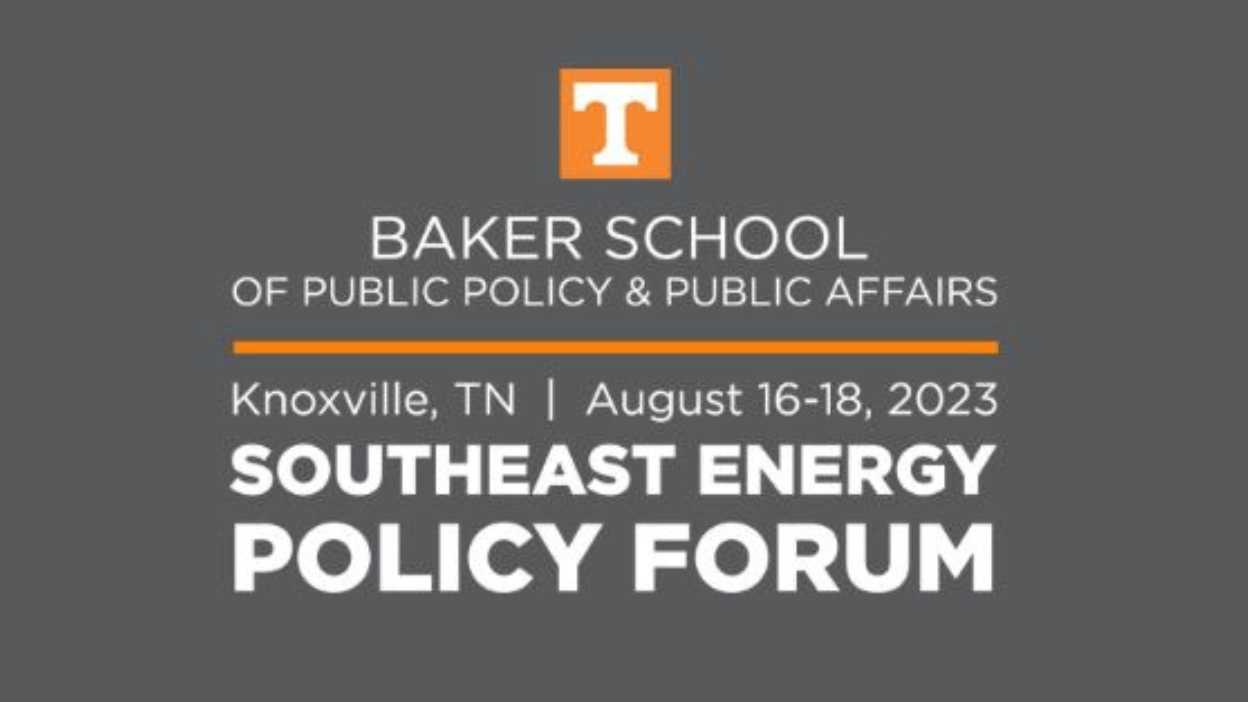
Former Governor Phil Bredesen talks about “big shapes” that address greenhouse gas solution
He was the final speaker on the second day of the “Southeast Energy Policy Forum” hosted by the new Baker School of Public Policy and Public Affairs at UT, Knoxville.
There was a widely communicated rumor related to the early days of Phil Bredesen’s tenure as Governor of Tennessee when he wanted to learn more about the formula that funded K-12 education. Administrators in the Tennessee Department of Education tried to brief him on how it worked, using spreadsheets to help.
As the story goes, the Governor told them that he actually wanted the software program that drove the formula loaded on his computer so he could better study how it worked and ways that it could be tweaked. Whether that’s true or not, Tennessee’s 48th Governor had a reputation for studying issues thoroughly and developing common sense, pragmatic solutions to address the challenge or opportunity.
Those characteristics were clearly evident on Thursday when Governor Bredesen wrapped-up the second day of the “Southeast Energy Policy Forum” hosted by the new Baker School of Public Policy and Public Affairs at the University of Tennessee, Knoxville (UTK).
His presentation, which included what the former Governor said was his first-ever use of PowerPoint without any fancy graphics, was titled “If I Were King: The Big Picture on the Southeast Energy Transition.” It was a matter-of-fact analysis that he described as “stepping back a bit and taking a look at the big picture.”
To illustrate the points he wanted to make, Governor Bredesen described how artists who paint pictures approach their work. “They don’t get distracted; they focus on the big shapes,” he said, adding, “If I were king, I would take the artist’s approach and find the big shapes.”
The former Governor then began to paint the landscape with those key shapes, explaining that “the only thing the earth cares about is not how it got here (with greenhouse gas emission challenges), but what we are going to do about it.”
Like he might have done in analyzing the K-12 education formula, he first described the big shapes or drivers of greenhouse gas emissions. They include transportation (29 percent), electricity (25 percent), industry (23 percent), agriculture (10 percent), commercial (7 percent), and residential (6 percent).
Governor Bredesen’s analysis said the proverbial “low-hanging fruit is pretty obvious.” It is electric power from fossil fuels and automotive and light truck in transportation that collectively account for about 40 percent of emissions in the first two broad categories.
So, what are the solutions?
One is clearly electric vehicles (EVs), but that is impeded by the lack of a robust charging system. Governor Bredesen said he and his wife have owned electric vehicles for a decade, but he drove a combustion engine vehicle to the forum. Why? There are no EV charging stations on the UTK campus and none at a nearby hotel.
“What would happen if I could not get back for meetings?”
Knowing his passion for solar energy as one of the co-founders of Silicon Ranch, Governor Bredesen clearly said that renewables are one of the big solution shapes, offering an immediate way to reduce emissions. “The technologies are mature, but renewables can’t do it all today.” They can be supplemented by nuclear, particularly small modular reactors (SMRs), energy storage, and hydrogen as another storage option.
Impediments to renewables like solar are access to the grid and permitting. On the latter point, Governor Bredesen said it takes four years from signing an agreement to build a solar installation to having it ready. Three years of that time involves permitting, and one year is for construction.
He also talked about those who want to make failure to address emission reduction a moral issue. “Don’t assign guilt,” particularly to small businesses that might not have the financial wherewithal to do their part or can only do it through carbon offsets.
The final big shape is the need for technological improvements such as those offered by hydrogen-enabled storage and what Governor Bredesen called “blue sky research.”
He concluded with some sage, common sense advice: “Create a vision of where we are going and how we’re going to get there, then put some energy behind it (the plan).”
Like what you've read?
Forward to a friend!

